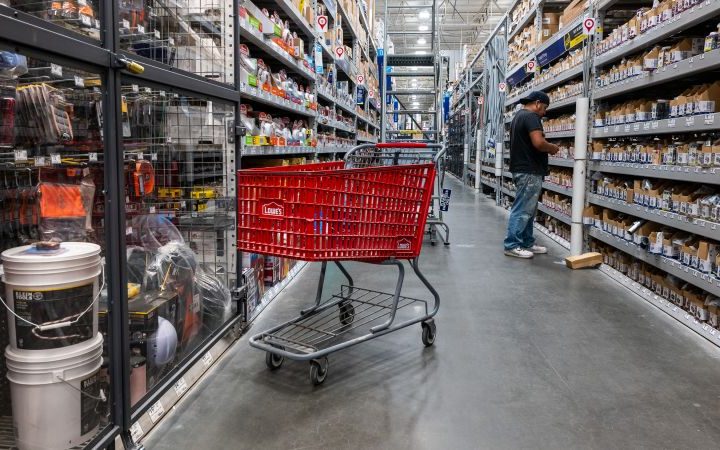Social Security benefits pump a large chunk of change into the US economy – with about $1.4 trillion going to more than 67 million Americans last year alone.
The program, equivalent to 5% of the country’s gross domestic product, provides a cash infusion that helps keep the economy afloat – recipients purchase goods and services with their benefits resulting in more revenue for businesses and jobs for workers.
That’s why it’s a big deal when Social Security recipients receive their annual cost-of-living adjustment.
Starting in January they’ll see a 3.2% increase in their Social Security checks, that’s a much smaller increase than the inflation-fueled boosts of the past two years, the Social Security Administration announced last week.
Retirees’ monthly payments will rise by $59 to an estimated average of $1,907. The lower adjustment reflects the fact that inflation has moderated this year. Recipients had received increases of 8.7% for 2023 and 5.9% for last year, which were the largest since the early 1980s.
Before the Bell spoke with David Certner, legislative counsel and policy director at AARP to discuss how that will impact the economy.
(This interview has been edited for length and clarity.)
Before the Bell: How does the Social Security Administration calculate these changes?
David Certner: The Social Security Cost-of-Living Adjustment (COLA) is based on the Consumer Price Index for urban wage earners. They look at the change in the year-over-year for the third quarter, which just ended in September, to determine the adjustment. So they look at those numbers for July, August and September to come up with the 3.2% cost of living adjustment.
Before the Bell: The last two annual adjustments have been really large. What does the drop off in 2024 mean?
David Certner: The point of COLA is to make sure that Social Security benefits are not eroded over time due to rising prices. Inflation was running very high over the last couple of years in particular. There’s always good and bad news when you have high inflation in terms of the COLA. Last year we saw one of the highest adjustments in history – that was a big increase for people. The bad news is that inflation was much higher and most seniors are living on a fixed income so that’s a very bad thing. The COLA helps offset that but it never helps you get ahead.
Before the Bell: Can you elaborate on what you mean when you say it never helps get you ahead?
David Certner: It’s certainly something that we hear from our members. They appreciate the increase and it is absolutely essential to their financial wellbeing, but nobody ever feels like it’s keeping up with their rising expenses.
One of the fastest-growing expenses is health care, and that tends to be one of the bigger items for seniors, as you can well imagine. Health care cost increases actually tend to run a bit faster than inflation rates. Last week we saw Social Security increase by 3.2% but the premium for Medicare, that’s the standard premium – it can get much more expensive, went up almost 6%.
For most seniors, that premium is automatically deducted from their Social Security check, so it’s eating up a large chunk of that increase.
Before the Bell: So what does more money in the pockets of seniors mean for the economy?
David Certner: There is a huge impact because Social Security is the largest source of income for most seniors. Most of the money that is being paid out on a monthly basis is being spent and going straight back into the economy. The amount of GDP that’s generated by Social Security checks is actually larger than the total amount of Social Security money going out in the first place.
As to where that money goes, I would say seniors tend to spend the most in major core areas like housing, healthcare, utilities and food.
Before the Bell: Could an increase in Social Security possibly add to inflation since that money is bolstering the economy?
David Certner: I think this is why some people get nervous about the cost of increasing payouts. But in many respects this is a self-financing mechanism, because over the last couple of years, we’ve had not only rising prices, but rising wages. Rising wages mean you have more payroll taxes being paid into the Social Security system. So the system is self-correcting in that way.
Before the Bell: What are some of the biggest misconceptions when it comes to Social Security?
David Certner: A lot of people talk about single year increases in Social Security payments. But the critical thing is how much it increases over time. If you’re taking your benefit at 65 or 67 and you’re going to be drawing benefits for the rest of your lifetime, you need to think about growth over a 20 or 30 year period. It’s one thing to lose 3% purchasing power in one year, but if you look at the COLA over the past year we saw an increase that totaled up to about 18%. That’s a dramatic impact on purchasing power.
The built in effect of the COLA is absolutely critical to maintaining the value of the benefit, particularly over time as people are getting older and becoming more reliant on Social Security as they spend down or run out of other assets.
Rite Aid filed for Chapter 11 bankruptcy protection Sunday, a casualty of a miserable environment for drug stores, exacerbated by its runner-up status to bigger chains and expensive legal battles for allegedly filling unlawful opioid prescriptions, reports my colleague David Goldman.
The bankruptcy was not a surprise. Its bigger rivals, CVS and Walgreens, are also facing many of the same problems. They, too, are closing stores as Amazon and big-box chains like Walmart, Target and Costco serve as more customer-friendly alternatives to nationwide pharmacy chains.
But Rite Aid is in much worse financial shape than its competitors and unable to weather the storm that has been beating down on the industry. On Thursday, it filed a notice to the US Securities and Exchange Commission saying it would be unable to file its latest quarterly financial report because it was looking at “strategic alternatives,” which is Wall Street speak for “considering bankruptcy.”
In that filing, the company said it expected its losses would increase significantly in the past quarter, which is saying something, considering it lost about three quarters of a billion dollars between March 2022 and March 2023 — and another $307 million between March and May this year. Over the past six years, Rite Aid has tallied nearly $3 billion in losses.
At the beginning of June, the last time the company filed a financial report, Rite Aid had just $135.5 million of cash on hand -— and $3.3 billion in long-term debt, which exceeded the value of the company’s assets by nearly $1 billion. With rising interest rates, that debt wasn’t cheap to finance.
“It was always a matter of when, not if, Rite Aid would file for bankruptcy,” said Neil Saunders, managing director of GlobalData, in a note to investors. “The company has been deep in the red for the past six years.”
Taylor Swift can add a new title to her illustrious resume: box-office superstar.
In its opening weekend, the pop singer’s concert film, “Taylor Swift: The Eras Tour,” raked in about $96 million in the box office in the United States and Canada, movie theater chain AMC said Sunday. That makes it the highest grossing concert film domestically for an opening weekend, according to AMC.
AMC, which also is the distributor of the film, expects “Eras” to play “to big audiences for weeks to come,” Elizabeth Frank, the company’s executive vice president of worldwide programming and chief content officer, said in a statement.
“Eras” also made about $32 million in international sales. It was No. 1 at the box office in the United Kingdom, Mexico, Australia, Germany and the Philippines. “Eras” is set to be released in Brazil, South Korea, Malaysia, Singapore, Taiwan and Hong Kong on November 3.
The $96 million in domestic box office sales dwarfed its competition, including “The Exorcist: Believer” and “Paw Patrol: The Mighty Movie.”
Read the full article here






